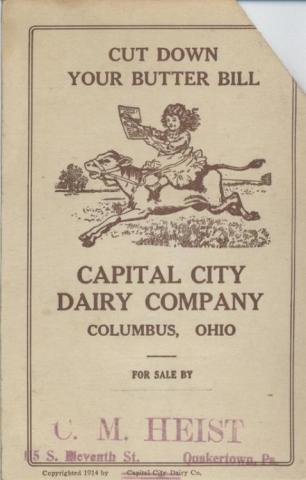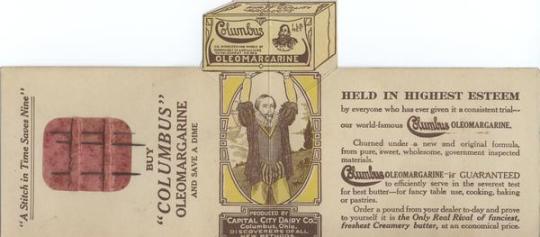
It's a frugal #FoodieFriday today as we turn to Columbus, Ohio's Capital City Dairy Company to help us with those pesky butter bills.

This handy little 1914 pamphlet for Columbus brand oleomargarine provided its holder with a handy holder for sewing needles as well as instructions for dying margarine to mimic the appearance of high-quality butter, as the lobbyists and associations working on behalf of the dairy industry had effectively banned manufacturers from doing so in most states by 1902.
As margarine became more popular with American consumers, the National Association of Margarine Manufacturers became more powerful, and was eventually able to lobby states to repeal these restrictions, with most states allowing for the sale of dyed margarine by the 1950s. The longest holdout was the great dairy state of Wisconsin, which had banned the sale of margarine colored to imitate butter in 1895. The state finally relented in 1967, but continued to forbid public establishments from offering margarine unless requested; an attempt to repeal this restriction failed in 2011.
This advertisement is call number Pam 2010.223 in Hagley Library's Carter Litchfield collection on the history of fatty materials (Accession 2007.227). As an organic chemist, Carter Litchfield (1932-2007) studied and specialized in edible fats. Over the course of his career, Litchfield built an important collection about the history of fats and fatty materials. This collection has not been digitized in its entirety. The online collection is a curated selection of items and primarily includes paper ephemera such as ration stamps, tax stamps, trade cards, pamphlets, and trade catalogs. You can view it online now by clicking here.

